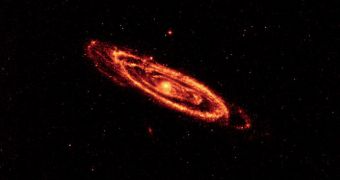Even after its primary science mission has been completed, the WISE telescope will continue to conduct studies in Earth's orbit, under what NASA terms the NEOWISE Post-Cryogenic Mission.
The Wide-field Infrared Survey Explorer is an observatory that was launched from Space Launch Complex 2W at the Vandenberg Air Force Base (VAFB), in Lompoc, California.
The take-off took place on December 14, 2009, aboard the Delta II 7320-10 delivery system, and the mission has now reached its tenth month.
Initially, a NASA panel said that there would be no mission extension beyond the original planned date for WISE's shut down. But that changed recently, as officials realized the potential the observatory still had.
“Two of our four infrared detectors still work even at warmer temperatures, so we can use those bands to continue our hunt for asteroids and comets,” explains scientist Amy Mainzer.
The telescope conducts observations in infrared wavelengths spanning 3 to 25 micrometers (μm). The mission is managed by experts at the NASA Jet Propulsion Laboratory (JPL) in Pasadena, California.
Mainzer, who is also based at the JPL, was selected the principal investigator of this new phase of the mission. The telescope will now focus on analyzing the asteroids and comets in the inner solar system.
Astronomers known that thousands of space rocks may exist in the space between Mercury and Mars, and they say that discovering and cataloging them all is of great importance to our safety.
The reason why WISE is needed to observe these bodies is because they are very cold, which means that only a very sensitive infrared observatory can make them out from the background.
But an IR telescope is only as good as its own temperature. If it is cooled near absolute zero, then it can conduct impressive studies of the sky.
But, when it exhausts its coolant, the warm stage of the mission begins. This is what recently happened to WISE, as its liquid coolant ran out.
“The science data collected by WISE will be used by the scientific community for decades,” believes Jaya Bajpayee, who is the WISE program executive in the Astrophysics Division at the NASA Science Mission Directorate, in Washington DC.
“It will also provide a sky map for future observatories like NASA's James Webb Space Telescope,” the expert adds.
Thus far, the telescope has discovered 120 near-Earth objects (NEO), 19 comets, and more than 33,500 asteroids lurking about.

 14 DAY TRIAL //
14 DAY TRIAL //